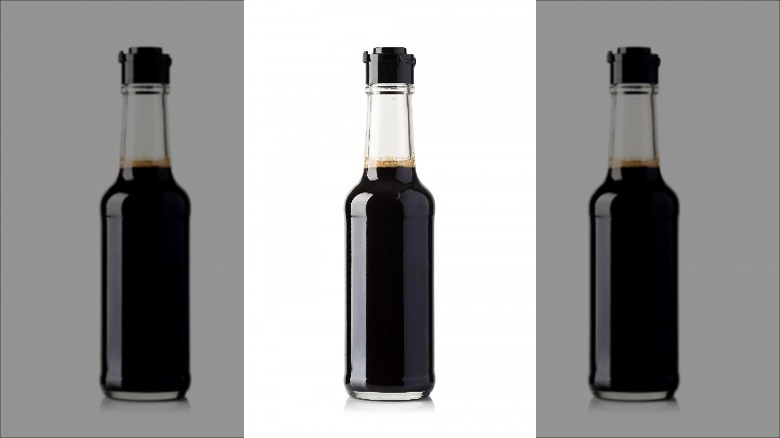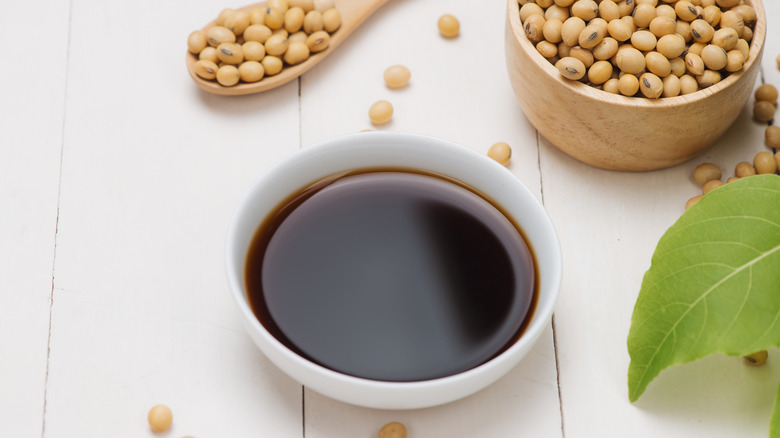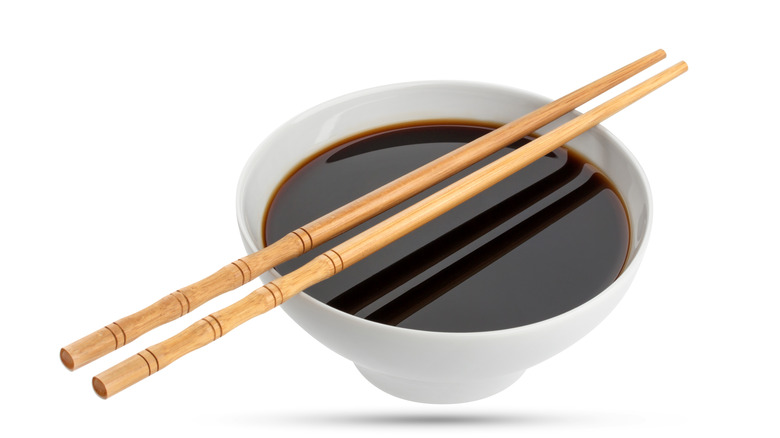Tamari Vs. Soy Sauce: Whats The Difference?
Tamari and soy sauce are found on the same store shelf, come in similar bottles, and, inside the bottles, appear to be a very similar brown liquid. What's more, they seem to be used almost interchangeably in many Asian recipes. Are they just two different words for the same thing, like confectioner's sugar and powdered sugar?
Well, not exactly — they are more like tequila and mezcal, where the former is a specific type of the latter. There are actually many different types of soy sauce, and tamari is one particular variety. Usually when we are speaking of soy sauce, we are referring to either the dark or light versions of traditional Chinese soy sauce. Tamari, on the other hand, comes from Japan.
Perhaps the most important difference between the two condiments, at least to those who are less concerned with culinary history than with actual ingredients, is the fact that many brands of tamari, including Kikkoman, are completely gluten-free and thus safe for consumption by anyone with celiac disease.
How tamari and soy sauce are made
While both tamari and traditional soy sauce are byproducts of soybean fermentation, they are produced in different ways. Tamari is extracted from fermented miso paste, a process which only occasionally involves the use of wheat or other grains. While most tamari sauces are completely gluten-free, there are a few which do contain trace amounts of gluten, so anyone with gluten sensitivity is advised to check the label.
Traditional soy sauce, on the other hand, is made from a mixture of soybeans, wheat, and other grains that are brewed and then fermented. Some types of soy sauce may be produced via chemically-induced fermentation, so these may also contain hydrochloric acid, caramel color, and corn syrup in addition to the water, wheat, soybeans, salt, and sugar found in more naturally-brewed versions (via Spoon University).
The difference in taste between tamari and soy sauce
The brine used to ferment the soybeans used in traditional soy sauce lends it a very salty flavor, so much so that soy sauce can often be substituted for salt in dishes such as scrambled eggs. Tamari is thicker, richer, and less pungent than soy sauce, and makes an excellent dip for sushi or dumplings as well as a great choice for a sauce base.
As these sauces are fairly similar, despite their differences, they can usually be substituted for one another with relative ease. If you are using tamari in place of soy sauce out of a desire to go gluten-free (or just because that's what you happen to have on hand), be aware, however, that you may need to add a little extra salt to your recipe. The same applies in reverse if you're using soy sauce — if the recipe calls for any added salt, perhaps cut back on it just a bit.


